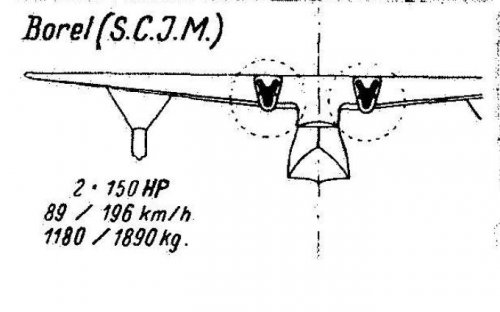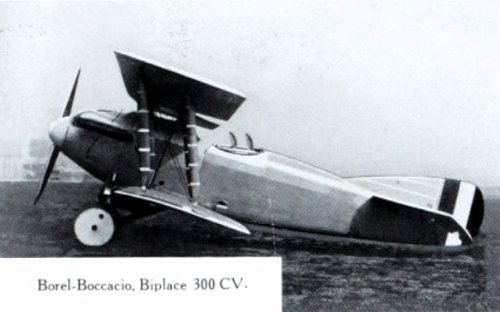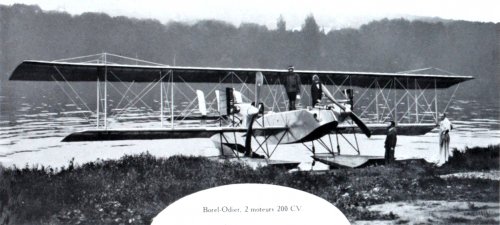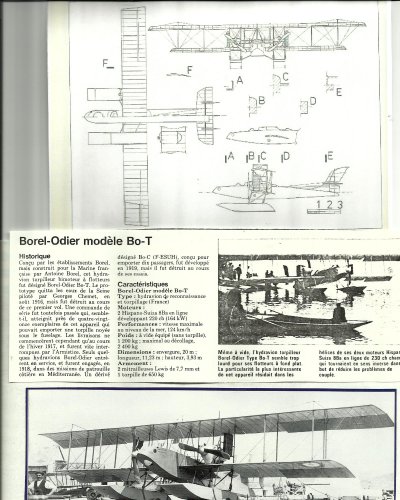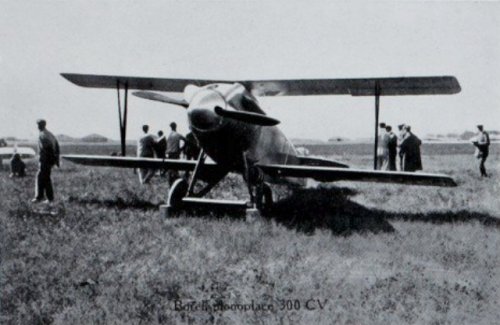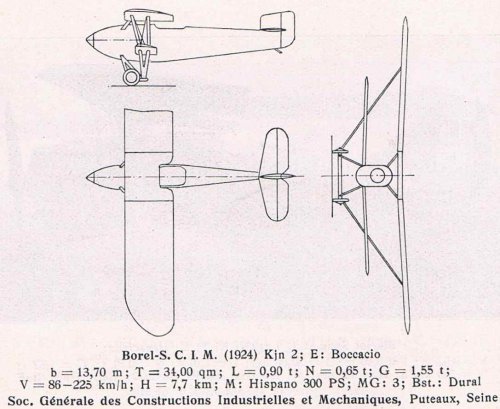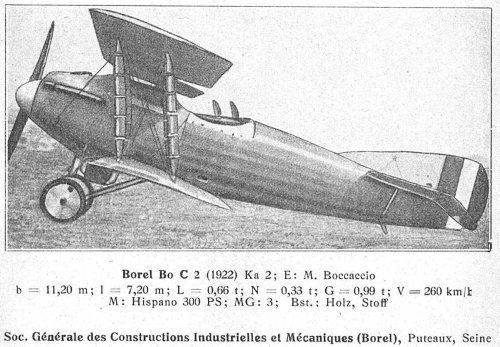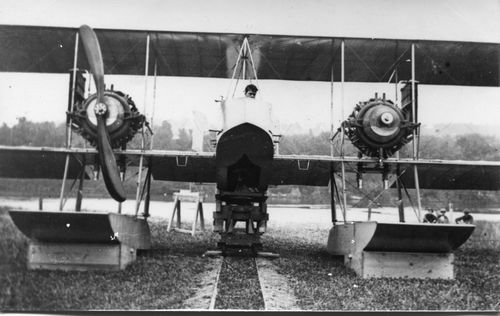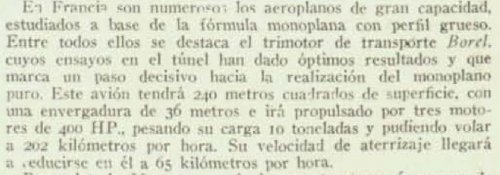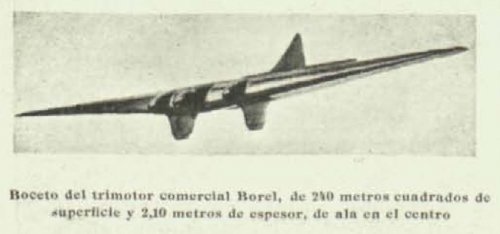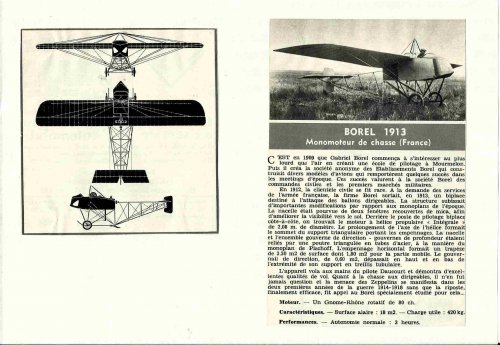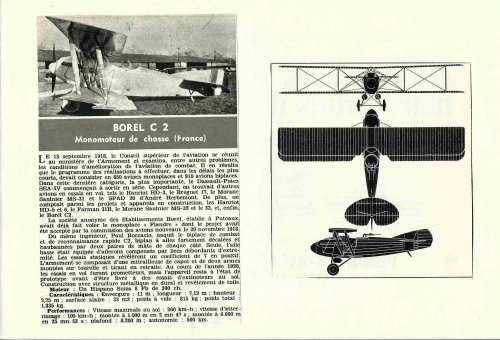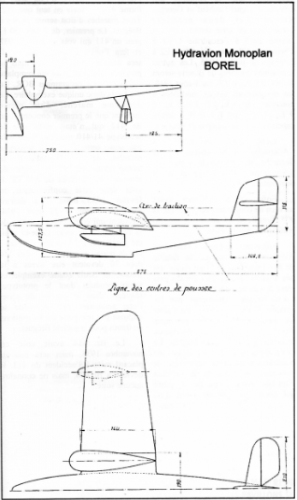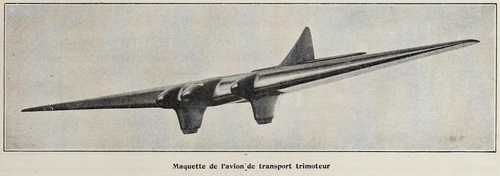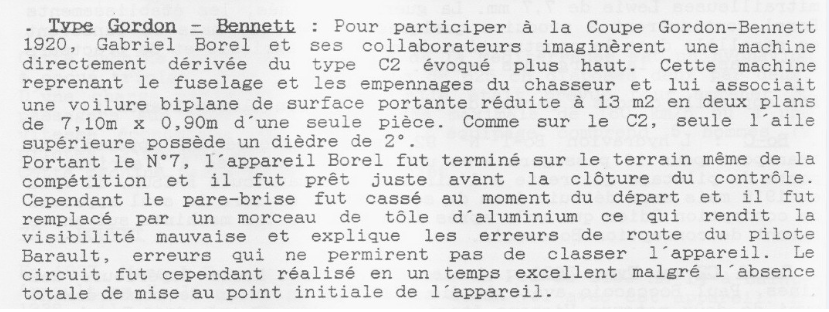was that an airplane for Borel ?.
Here is the translating of the text,but I don't know if it was an aircraft,flying bomb or what,who can help? ;
Borel exhibits a fast reconnaissance device, completely metallic skeleton,
300 hp engine with turbo-compressor Rateau which should allow him a
ceiling of 10,000 m.
It was airplane for CAN/CAP 2;
Borel type
CAN / CAP 2: Under the 1922/2 contract, SCIM produced
two copies of a combat and reconnaissance biplane equipped with a
Hispano 300 hp engine fitted with a Rateau turbocharger intended to
give it good performance in altitude. Exhibited at the 1922 Salon, the
device is a sesquiplan of duralumin structure and canvas.
The upper wing has a 2 ° dihedron while the two wings have a 4 °
deflection. From a theoretical ceiling of 10,000m, it would have
reached 248 km / h at 5,000m (calculated Performance).
The apparatus was without tomorrow. The armament included a pair
of rear turret machine guns and probably two synchronized forward
firing weapons. Lamblin radiators were installed between the legs of
the landing gear, attached to the bottom fuselage.
TU 162

